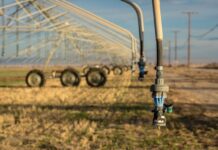

As the environment is taking its course, the concrete jungles are gradually imbibing nature’s way of sustaining – naturally! Architects, one of the main players behind the creation of these jungles are now realising the impact each building has on the environment. And hence, for them, ‘green building’ has become the new norm.
Not only the architects and engineers, but even science has realised that green building reduces depression in humans and the environment. We have handpicked 10 such examples from different parts of the globe, that may inspire smart cities to replicate more of these.
Call it green or sustainable, these buildings are a phenomenon on their own. Either through reliance on renewable energy or adoption of eco-friendly materials or both – each one is contributing to a greener tomorrow!
Amherst College (US) – A Science Centre To Last For 100 Years
American Institute of Architects (AIA) Committee on the Environment (COTE) chose Amherst College Science Centre as one of the top 10 green buildings in the US in 2019. Bestowed with the highest honour, the COTE Top Ten Awards, the new science centre is built to last for over 100 years. Thanks to the range of natural materials used in the construction.
What’s more, the building offers an open learning environment for the entire campus. The floor area has been designed to achieve sufficient light levels without the use of artificial lighting. The pavilions are clad in ultra-high performance concrete panels protected by a fixed weathering steel screen. It has been designed in a way that reduces energy usage by 76%.
Reforma Tower (Mexico) – The Energy-efficient Skyscraper
Reforma Tower inaugurated in 2016 is the second tallest skyscraper in the country with 57 floors. Designed by the LBR&A architectural firm, the building is considered as a sustainability benchmark in the whole of Latin America. The greatest reason is that it owns a LEED Platinum pre-certification for embracing highly efficient management of resources. The structure saves 24% of energy and 30% of water consumption. It also harvests rainwater for consumption with a more interesting fact that it gets treated within the building. So, it doesn’t have a drainage system at all! Moreover, robotic parking curbs carbon emissions while the elevators innovatively provide shelter against earthquakes or fires.
Corallo House (Guatemala) – Home Around Trees
Corallo House is a residential phenomenon situated in Santa Rosalia, covering 747 square metres. PAZ Arquitectura designed the structure without disturbing the existing trees in the place. The layout of the house integrates into the natural exterior – which is a forest. The aim was to preserve the trees while building a living space that interacts with nature. Glass facades play the important role of the merge. Besides, the floor plan is without columns and adapts to the existing topography.
Sunshine Coast University Hospital – Australia’s “Sustainability Superstar”
Australia is known for its dozens of green offices. But this is the first time the nation received its largest healthcare facility granted Six Star Green Star ratings for design and construction.
A $1.8 billion project, Sunshine Coast University Hospital has been recognised as the best public building. This came after it received the 2019 Rider Levett Bucknall/Property Council of Australia Innovation and Excellence Awards. Nicknamed as the “sustainability superstar” by the judging panels, it reflects harmony between energy efficiency and human-centric design.
The hospital features a solar water heater, energy metering, energy storage systems and efficient lighting. It has been designed to optimise access to sunlight, keeping the harsh summers and heavy rainfall (Queensland climate) in mind. 80% of its roof is planned to harvest rainwater equal to 1.5 million litres.
The Whitepod Eco Resort (Switzerland) – Low-impact Hotel


The Whitepod Eco Resort nestled amidst the snow-covered mountains in Switzerland was awarded the World Prize for Sustainable Tourism. The highlight of the hotel is the innovative low-impact pods. These accommodation spaces are built with a self-sustaining frame and heated with a wood stove. Other eco-friendly features are water-saving devices, timeouts for boilers, LED lighting, and natural spring water for drinking. The resort uses solar energy in areas possible and keeps lighting at night to a minimum. Considering the green features, this can be regarded as the most eco-conscious yet beautiful green hotel on Earth.
Suzlon One Earth (India) – Office Powered By 100% Renewable Energy
We have on our list the largest and one of the first green offices in India to receive a LEED Platinum rating in 2010. Architect Charles Benninger designed the building in such a way that 90% of the interior receives natural light. Spread over 10-acre area, the office is 100% powered by offsite and onsite renewable sources. 18 wind turbines have been installed within the campus which account for 7% of the total energy usage. The rest comes from offsite wind turbines. A water percolation system is another outstanding feature that controls stormwater runoff, adding to an increase in the water table.
Ghana Ridge Hospital (Ghana) – Self-supporting Building
Among the ten examples of how buildings can become sustainable, the Ghana Ridge Hospital in Accra is the most inspiring. This is owing to the fact that the city built a self-sustainable healthcare facility despite significant challenges. And after completion, it received a LEED certification which was actually not expected.
It was 2004 when the construction began and the city was facing 159 days of blackouts in a year. There were also challenges like the lack of infrastructure to support green buildings. Hence, its architects Perkins+Will adopted ways to design and build with whatever was locally available. They installed natural ventilation without any expensive HVAC system. They also equipped the building with solar water heater – thanks to the hot climate of Accra. For 100% water supply, the building has an underground tank that reserves the water from rains. Another phenomenal factor is a fully walkable ramp that connects four stories of the structure. As there was a lack of electricity integration of elevators was not possible.
Irena Headquarters (UAE) – The Least Wasteful Building
International Renewable Energy Agency (Irena) headquarters located in Masdar City is the most sustainable building in the UAE. It is the first-ever to receive a four Pearl rating from the Abu Dhabi Urban Planning – which is equal to LEED platinum rating. The building houses a solar rooftop with 1,000 square metres of solar panels generating 305,000 kilowatts/hours of electricity per year. It harnesses 95% of the energy produced by elevators and 75% of heat from AC systems and reuses it as energy. As a whole, the seven-storey structure consumes 64% less energy and 50% less water than traditional ones in Abu Dhabi. So, it is one of the least wasteful buildings in the world.
The Crystal (UK) – 100% Water Reused
The Crystal in London belongs to one of the leading tech companies Siemens. The office attracts thousands of visitors each year for being the ‘urban sustainable landmark. Almost every ray of natural light entering the premises is utilised. Smart lighting is installed for which the power comes from solar panels. A combination of LED and fluorescent lights switches on and off automatically depending on the daylight. Other interesting features of the office include Rainwater harvesting and Black Water Recycling. While the roof collects rainwater, the sewage water is recycled, purified and converted into potable water.
Sandbag Houses (South Africa) – One Of A Kind Greenest House
Sandbag Houses in Freedom Park, Cape Town, South Africa inspires the world on how money and resources can be conserved. These houses were built replacing brick and mortar with sandbags by the company called EcoBeams with a mere $6000 investment. The natural material is reported to be strong, safe and inexpensive in delivering affordable housing. What surprises more is that the sand was collected from dunes located just 100 metres away from the site. Meaning that there were no transportation charges involved. More interestingly, the construction was completed with the help of its future residents. Least you would imagine that the sandbags are heaped inside timber frames and plastered on top.
According to the latest report from the World Business Council for Sustainable Development, buildings are responsible for 40% of energy usage – contributing to GHG emissions. However, green buildings are the most sustainable way of diminishing the possibility of cities becoming storehouses of GHG.
Hence, pick the kind of green building you would like to build in your smart city. And don’t forget to implement the concept starting from the design process!



































